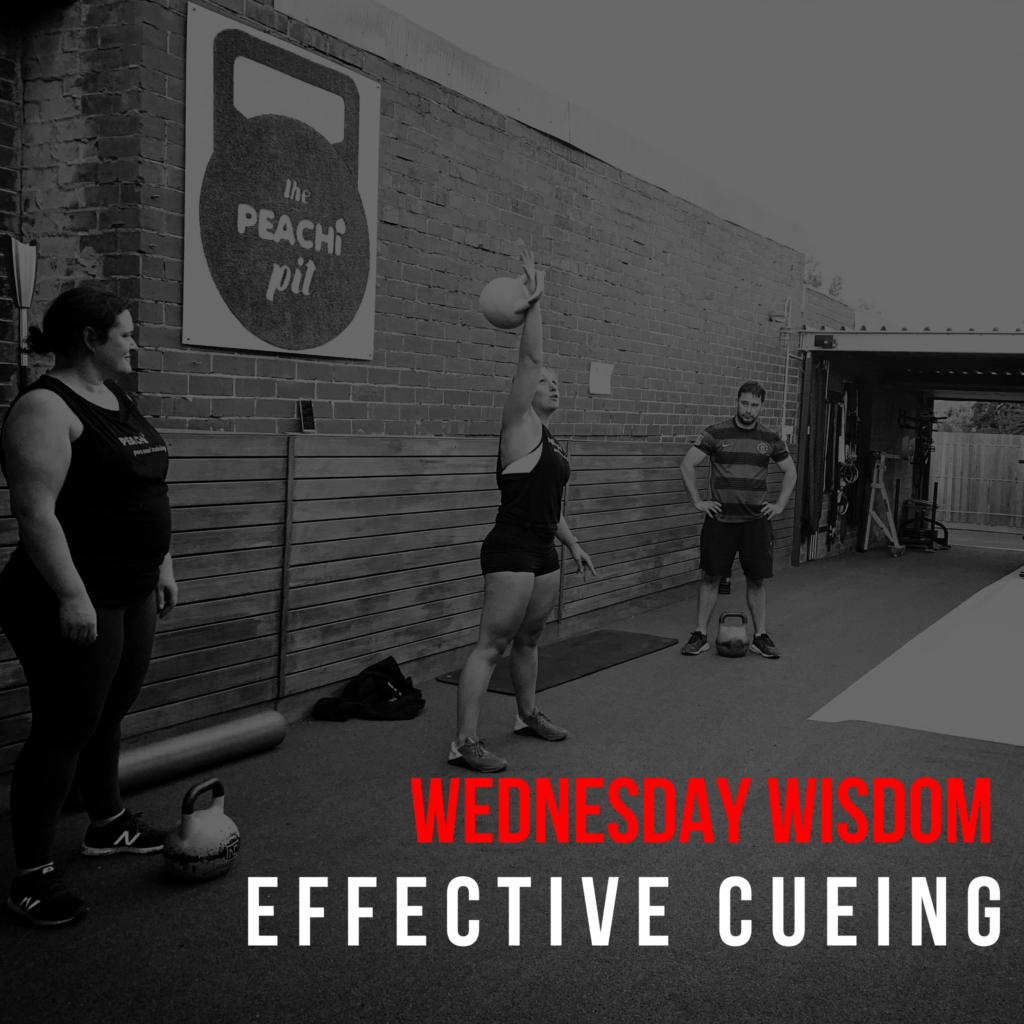Last week’s wisdom was NOT to be missed, so if you didn’t catch the post on how to communicate with clients scroll down and check it out now, because it’s VITAL to consider the language we use if we want to be great coaches!
Sticking with the theme of communication, in this week’s post we begin exploring cueing – how do we successfully instruct clients in movement?
Just to reiterate why coaching communication and language are among THE most important skills you need to develop if you want to be a world class coach…
Put simply, you can have all the technical skill and knowledge in the world, but if you can’t connect with your clients, explain how you want them adjust their movement or what the plan is to progress them forward, then nothing else matters – because if you can’t effectively communicate all that then your clients will never comprehend it, apply it or benefit from it
So how do we most effectively cue movement as coaches?
First we need to consider the key elements that make a cue effective:
- Understanding
Does your client understand what you’re saying? If they don’t, you’re not definitely not going to achieve much!
It’s important you use language they understand, which is sometimes where we come undone as coaches if we use technical or anatomical terms ( for example, “protract your scapulas”). This can be easy for us to do because we have that deeper understanding of the body and movement – our brain can naturally thinks in those terms. Not to mention the fact that we want to demonstrate our expertise and sound knowledgable as we teach too! But the reality is we don’t show our expertise using technical words that confuse our clients, we show our expertise by ensuring they can easily comprehend and apply what we’re saying.
**2. Congruency: **
Has your cue had the desired outcome – following their understanding of your instruction, does your client then move the way you want them to move?
Obviously, it’s crucial that your instructions (or how your client interprets them) are in line with how you want them to set up or adjust a movement. If a cue you’re using causes a client to adjust in a different way than you were hoping, your explanation or their understanding is clearly not congruent with how you want them to move. In these cases it’s necessary to go back to the the beginning and cue differently until you reach the desired outcome.
**3. Retention: **
Does your client remember how to move in the next set and and carry that into the next session?
It’s key that we create cues that are relatable and memorable for the people you work with – as coaches we don’t want to have to repeat the same thing over and over to ensure someone moves the way you want them to, nor do clients want to be told the same thing time and time again! If someone can’t retain the information and the cue, it’s impossible for them to learn the movement, right?
This week, I ask you to tune in to how effective your cues are…
… Do you use language your clients understand, or does a look of confusion set in as you speak?
… Do you have to repeat yourself with the same cues over and over again week in and week out?
Next week, we’ll dive deep into the types of cues we can use and which ones are the most effective in coaching
For for Newsletter

